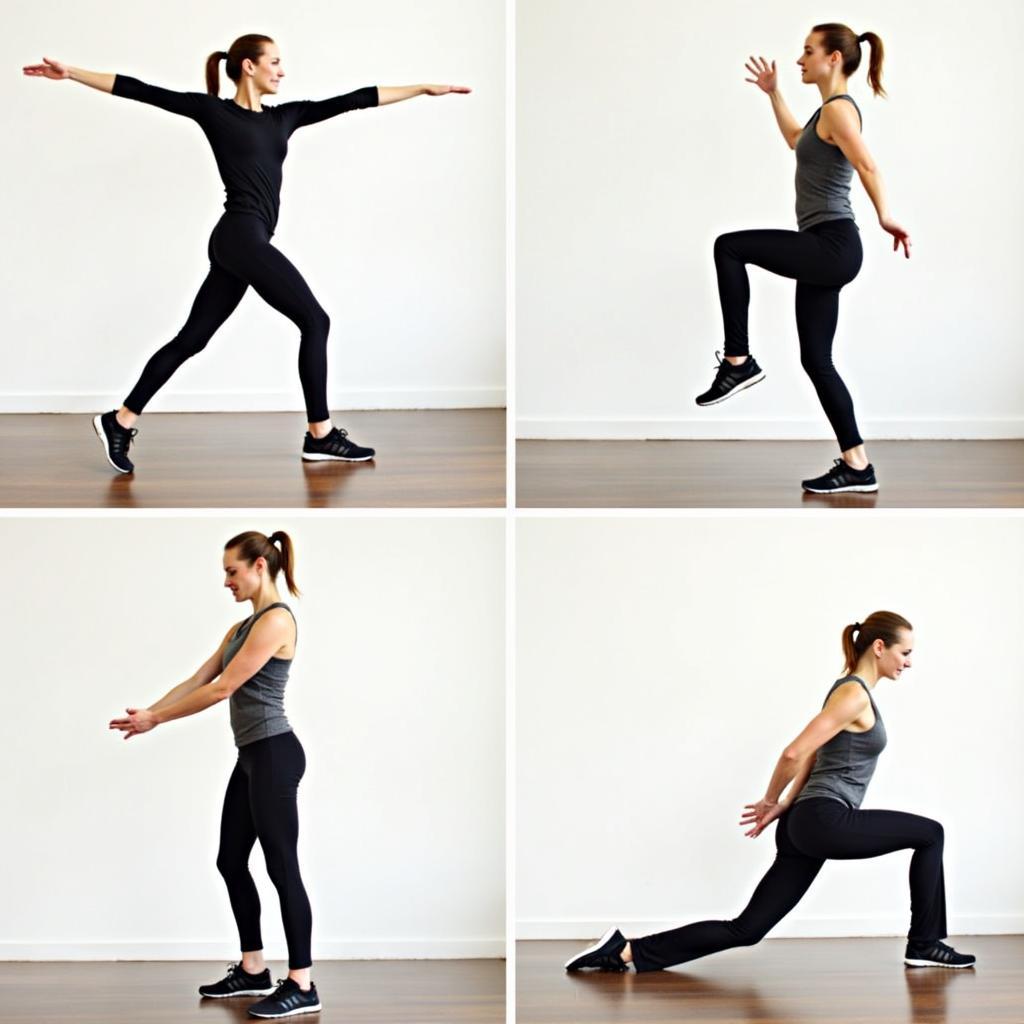Dynamic stretching is a crucial concept in physical fitness and sports training that IELTS test-takers should be familiar with. This article will explore the meaning, usage, and importance of this term, providing you with valuable insights to enhance your vocabulary and boost your IELTS performance.
Understanding Dynamic Stretching
Dynamic stretching /daɪˈnæmɪk stretʃɪŋ/ (noun phrase) refers to a type of stretching that involves moving parts of your body and gradually increasing reach, speed of movement, or both.
Context and Usage
Let’s examine some examples of how “dynamic stretching” is used in context:
- Athletes often incorporate dynamic stretching into their warm-up routines to prepare their muscles for intense activity.
In this sentence, “dynamic stretching” is presented as a common practice among athletes, highlighting its importance in pre-exercise preparation. - Unlike static stretching, dynamic stretching involves active movements that mimic the exercise or sport you’re about to perform.
Here, the phrase is used to contrast with static stretching, emphasizing the active nature of dynamic stretches. - Research has shown that dynamic stretching can improve power, agility, and overall athletic performance when done correctly.
This example demonstrates the benefits of dynamic stretching, which could be useful information for an IELTS Writing Task 2 essay on health and fitness. - The physical education teacher demonstrated various dynamic stretching exercises to the students before their track and field practice.
This sentence illustrates a practical application of dynamic stretching in an educational setting, which could be relevant for an IELTS Speaking task about sports or education. - Many fitness experts recommend dynamic stretching over static stretching for pre-workout routines to reduce the risk of injury.
Here, the phrase is used to convey expert opinion, which could be valuable for an IELTS Writing Task 1 report on fitness trends.

Frequency in IELTS
While “dynamic stretching” is not an extremely common term in IELTS exams, it may appear in Reading passages or Listening sections related to sports, fitness, or health. It’s also a useful term for Writing Task 2 essays or Speaking Part 3 discussions on these topics.
Analyzing the Vocabulary
Word Structure
- Dynamic: An adjective meaning characterized by constant change, activity, or progress.
- Stretching: The present participle of the verb “stretch,” used here as a gerund (noun form).
Synonyms and Antonyms
Synonyms:
- Active stretching
- Ballistic stretching
- Movement prep
Antonyms:
- Static stretching
- Passive stretching
- Isometric stretching
Memorization Techniques
Mind Map
Create a mind map with “Dynamic Stretching” at the center, branching out to related concepts such as:
- Types of exercises (e.g., leg swings, arm circles)
- Benefits (e.g., improved flexibility, reduced injury risk)
- Contexts (e.g., sports warm-up, fitness routines)
- Related terms (e.g., mobility, range of motion)
Visualization Technique
Imagine yourself as a sprinter on a track. Before the race, you’re moving your legs and arms in controlled, rhythmic motions – these are dynamic stretches. Picture the fluid movements and the gradual increase in range and speed as you prepare your body for the upcoming sprint.
Practical Application
Exercise 1: Sentence Completion
Complete the following sentences using “dynamic stretching” or related terms:
- Before the marathon, runners engaged in __ to prepare their muscles for the long race.
- The yoga instructor emphasized the importance of __ to improve flexibility and prevent injury.
- __ is often preferred over static stretching for pre-workout routines because it helps increase blood flow to the muscles.
Exercise 2: IELTS Writing Task 2 Practice
Write a paragraph for an IELTS Writing Task 2 essay on the following topic:
“Some people believe that stretching before exercise is crucial for preventing injuries, while others think it’s unnecessary. Discuss both views and give your opinion.”
Use the term “dynamic stretching” in your response and demonstrate your understanding of the concept.
Conclusion
Mastering the term “dynamic stretching” can significantly enhance your IELTS performance, especially in tasks related to sports, fitness, and health. By understanding its meaning, usage, and context, you’ll be better equipped to comprehend reading passages, answer listening questions, and articulate your thoughts in writing and speaking tasks.
Remember to practice using this term in various contexts and review it regularly to reinforce your memory. As you continue to expand your vocabulary, consider exploring related concepts such as active recovery to further boost your IELTS preparation.
We encourage you to share your experiences with learning and using this term in the comments section below. Have you encountered “dynamic stretching” in your IELTS practice or in real-life situations? How has understanding this concept improved your English language skills? Your insights could be valuable to other learners on their IELTS journey!